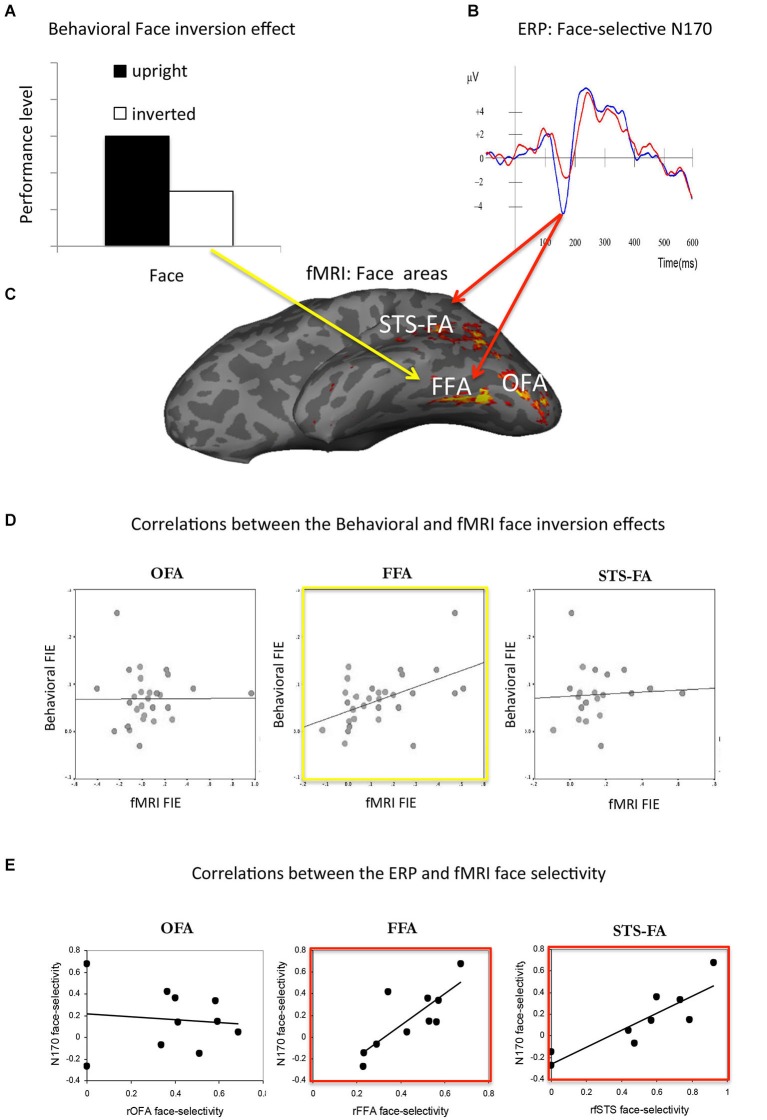Figure 2.
(A) The face inversion effect refers to the better recognition of faces presented in upright orientation than inverted (i.e., upside down). (B) The face N170: event-related potentials (ERPs) show higher amplitude to faces than non-face stimuli (i.e., face-selectivity) at 170 ms after stimulus onset. (C) Functional MRI studies reveal three face-selective (i.e., higher response to faces than non-face objects) regions in the occipital-temporal cortex: the occipital face area (OFA) in the lateral occipital cortex, the fusiform face area (FFA) in the fusiform gyrus and the superior temporal sulcus face area (STS-FA) in the posterior part of the STS. (D) The association between the behavioral face inversion effect (i.e., difference in performance level for upright than inverted faces) and the fMRI face inversion effect (i.e., difference in fMRI response to upright than inverted faces) was found only with the FFA (Yovel and Kanwisher, 2005). (E) Correlations among the magnitude of face selectivity (i.e., difference in ERP or fMRI response to faces than non-faces) was found at 170 ms with the FFA and STS-FA, but not with the OFA (Sadeh et al., 2010).

